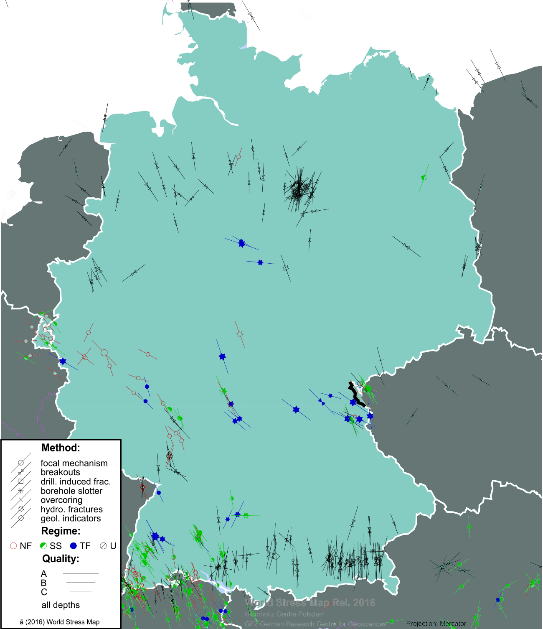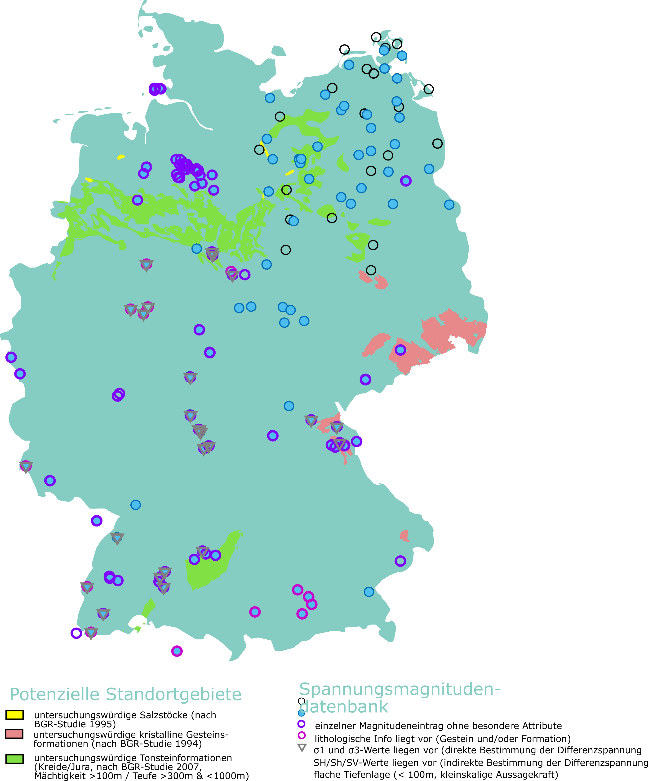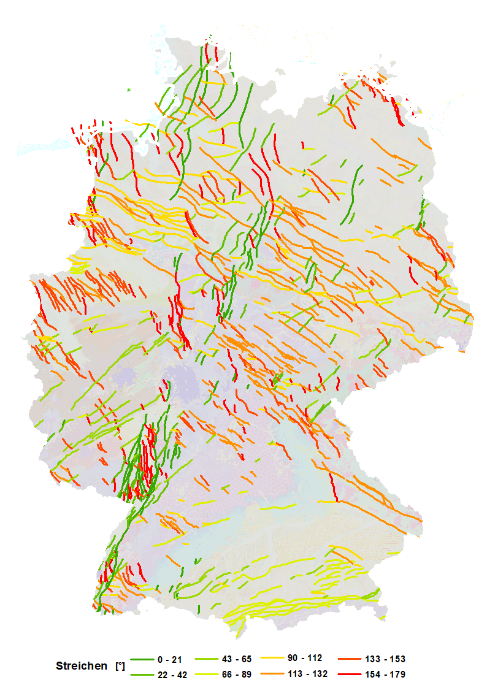SpannEnD - Tectonic stress field for the site selection of a repository for nuclear waste
- Ansprechperson:
B.I.R. Müller
- Förderung:
Bundesministerium für Wirtschaft und Energie (BMWi)
- Starttermin:
2018
- Endtermin:
2020
The disposal of nuclear waste poses a major challenge to the society as a whole and the scientific community in particular. Deep rock formations could host future repositories but their long-term protective properties highly depend on the tectonic stress field. This stress field however is vastly unknown and predictions about both stress magnitudes and orientations are hindered by only sparse information available (Fig.1). The SpannEnD project‘s main objective is twofold: a) Compilation of stress magnitudes and orientations in a database (mainly by GFZ), b) generation of a calibrated, lithosphere-scaled, 3D geomechanical-numerical model of Germany (KIT and TUDA). The calibration is performed on the stress data. This model can be used to predict stress magnitudes and orientations in areas without stress data. Sedimentary basins will be modeled at KIT whereas the basement and deeper units will be modeled at TUDA.
 |
 |
| Fig. 1 Stress Orientation data on the left (World Stress Map) and stress magnitude data on the right (currently compiled at GFZ Potsdam) | |
Modelling works will be based on an already existing 3D model of Germany (3DD) that has kindly been provided by members of the GFZ and consists of three submodels (Fig. 2) that cover most of the planned modelling area. Units implemented in the 3DD model have to be altered to satisfy the needs of a geomechanical model for stress prediction. As stress magnitude data are sparse and mainly accumulated throughout specific horizons it is crucial to implement these units and to ensure a sufficient resolution. Areas not covered by the 3DD submodels (Fig. 2) are being added. The KIT is focusing on the underground structures in the France-Belgian area.
Furthermore, major geological structures have to be identified and implemented (Fig. 3). Therefore, information about relevant properties such as activity, displacement or depth of detachment of faults will be compiled and reviewed.
The altered and extended model will be meshed at KIT and TUDA while using stress data for calibration and allow for the prediction of stress magnitudes and orientations and areas without measured stress data.
We will also be testing the application of ApplePy, a modelling tool for quicker and automated discretization. We will compare the results of a complex, large-scale model discretized by ApplePy and a manually discretized model. A sufficient accordance between the results will be seen as evidence of the applicability of ApplePy.
 |
 |
| Fig. 2 Extend of the 3DD submodels and the planed modelling area | Fig. 3 Some major structures in Germany that are currently being revised |

